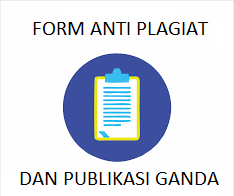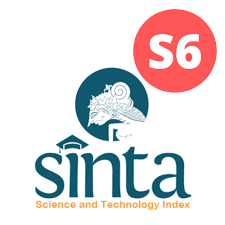Seed-Borne Fungal Diseases of Maize (Zea mays L.): A Review
Abstract
- Introduction: Maize (Zea mays) is one of the most important cereal crops. It is ranked as 3rd after wheat and rice. Due to its wide adaptability, diversified uses, and low production costs, it has great potential as a cereal crop. In the case of yield losses, various factors are involved. The fungal diseases of maize play a significant role in the reduction of both quantity as well as the quality of maize.
- Review Results: At the seedling stage, maize suffers from numerous diseases and many of them are seed-borne diseases. Anthracnose stalk rot (Colletotrichum graminicola), Charcoal rot of maize (Macrophomina phaseolina), Crazy top downy mildew disease (Sclerophthora macrospora), Corn grey leaf spot disease (Cercospora zeae-maydis), Aspergillus ear and kernel rot (Aspergillus flavus), Corn smut (Ustilago maydis), Southern corn leaf blight disease (Bipolaris maydis) etc. are important among these diseases.Chemical control of seed-borne pathogens of maize is rather difficult to achieve as a reasonably good. Due to the hazardous environmental effects of chemicals, the Integrated Management of the seed-borne fungal pathogens of corn is mostly preferred. The distribution, disease cycle, symptoms of the damage, effects of environmental factors, economical importance of disease, and integrated disease management options of major seed-borne fungal pathogens of maize have been reviewed in this review article from various currently available sources.
Downloads
References
Adnan, M. (2020). Role of potassium in maize production: A review. Open Access Journal of Biogeneric Science and Research, 3(5), 1-4. https://doi.org/10.46718/JBGSR.2020.03.000083.
Adnan, M., & Bilal, H. M. (2020). Role of boron nutrition on growth, phenology and yield of maize (Zea mays L.) hybrids: A review. Open Access Journal of Biogeneric Science and Research, 4(1), 1-8. https://doi.org/10.46718/JBGSR.2020.04.000110.
Adnan, M., Hayyat, M. S., Imran, M., Rehman, F. U., Saeed, M. S., Mehta, J., & Tampubolon, K. (2020). Impact of foliar application of magnesium fertilizer on agronomic crops: A review, Indian Journal of Applied and Pure Biosciences, 8(6), 281-288. http://dx.doi.org/10.18782/2582-2845.8465
Adnan, M., Tampubolon, K., Rehman, F. U, Saeed, M. S., Hayyat, M. S., Imran, M., Tahir, R., & Mehta, J. (2021). Influence of foliar application of magnesium on horticultural crops: A review. Agrinula : Jurnal Agroteknologi dan Perkebunan, 4(1), 13-21. https://doi.org/10.36490/agri.v4i1.109.
Agrios, G, N. (2005). Plant pathology: Fifth edition. Elsevier Academic Press, London.
Ali, A., Adnan, M., Abbas, A., Javed, M. A., Safdar, M. E., Asif, M., Imran, M., Iqbal, T., Rehman, F. U, & Ahmad, R. (2020a). Comparative performance of various maize (Zea mays L.) cultivars for yield and related attributes under semi-arid environment. Agricultural and Biological Research, 36(4), 63-66.
Ali, A., Adnan, M., Safdar, M. E., Asif, M., Mahmood, A., Nadeem, M., Javed, M. A., Ahmad, S., Qamar, R., Bilal, H. M, Khan, B. A, Amin, M. M.,& Raza, A.(2020c). Role of potassium in enhancing growth, yield and quality of maize (Zea mays L.). International Journal of Biosciences, 16(6), 210-219. http://dx.doi.org/10.12692/ijb/16.6.210-219.
Ali, A., Hayyat, M. S., Adnan, M., Safdar, M. E., Asif, M., Khan, M. A. B. Javed, M. A., Rehman, F. U., Abdullah, M., Mumtaz, Q., Ahmad, R. (2020b). Effect of various planting dates on performance of different maize hybrids. Agricultural and Biological Research, 36(5), 75-79. https://www.abrinternationaljournal.org/abstract/effect-of-various-planting-dates-on-performance-of-different-maize-hybrids-60473.html.
Ali, M., Ali, A., Adnan, M., Safdar, M. E., Asif, M., Javed, M. A., Hassan, W., Mahmood, A., & Iqbal, T. (2020d). Impact of boron nutrition on phenology, growth and yield of maize (Zea mays L.). Journal of Biodiversity and Environmental Sciences, 17(2), 113-120.
Amaike, S., & Keller, N. P. (2011). Aspergillus flavus. Annual Review of Phytopathology, 49, 107-133. https://doi.org/10.1146/annurev-phyto-072910-095221.
Anderson, B. & White, D. (1987). Fungi associated with cornstalks in Illinois in 1982 and 1983. Plant Disease, 71(2), 135–137. http://dx.doi.org/10.1094/PD-71-0135.
Asif, M., Nadeem, M. A., Aziz, A., Safdar, M. E., Adnan, M., Ali, A., Ullah, N., Akhtar, N., & Abbas, B. (2020). Mulching improves weeds management, soil carbon and productivity of spring planted maize (Zea mays L.). International Journal of Botany Studies, 5(2), 57-61. http://www.botanyjournals.com/archives/2020/vol5/issue2/5-1-52.
Aydogdu, M., & Boyraz, N. (2011). Effects of nitrogen and organic fertilization on corn smut (Ustilago maydis (DC) Corda.). African Journal of Agricultural Research, 6(19), 4539-4543. https://doi.org/10.5897/AJAR10.1166.
Babu, B. K., Saxena, A. K., Srivastava, A. K., & Arora, D. K. (2007). Identification and detection of Macrophomina phaseolina by using species-specific oligonucleotide primers and probe. Mycologia, 99(6), 797-803. https://doi.org/10.1080/15572536.2007.11832511.
Banuett, F. (1995). Genetics of Ustilago maydis, a fungal pathogen that induces tumors in maize. Annual Review of Genetics, 29(1), 179-208. https://doi.org/10.1146/annurev.ge.29.120195.001143
Benz, B. F. (2001). Archaeological evidence of teosinte domestication from Guilá Naquitz, Oaxaca. Proceedings of the National Academy of Sciences, 98(4), 2104-2106. https://doi.org/10.1073/pnas.98.4.2104.
Bergstrom, G. C., & Nicholson, R. L. (1999). The biology of corn anthracnose: knowledge to exploit for improved management. Plant Disease, 83(7), 596-608. https://doi.org/10.1094/PDIS.1999.83.7.596.
Bruns, H. A. (2017). Southern corn leaf blight: a story worth retelling. Agronomy Journal, 109(4), 1218-1224. https://doi.org/10.2134/agronj2017.01.0006.
Calvert, O. H., & Zuber, M. S. (1973). Ear-rotting potential of Helminthosporium maydis race T in corn. Phytopathology, 63(6), 769-772. http://dx.doi.org/10.1094/Phyto-63-769.
Carson, M. L. (1999). White, D. G. (ed.). Compendium of corn diseases: Anthracnose leaf blight. St. Paul, MN: American Phytopathological Society. pp. 21–22.
Cimmyt. (2004). The Cimmyt Maize Program 2004. Maize diseases: A guide for field identification. 4th edition. Mexico, D.F., International Maize and Wheat Improvement Centre (CIMMYT).
Cobo-Díaz, J. F., Baroncelli, R., Le Floch, G., & Picot, A. (2019). Combined metabarcoding and co-occurrence network analysis to profile the bacterial, fungal and Fusarium communities and their interactions in maize stalks. Frontiers in Microbiology, 10, 261. https://doi.org/10.3389/fmicb.2019.00261.
Dernoeden, P. H., & Jackson, N. (1980). Infection and mycelial colonization of gramineous hosts by Sclerophthora macrospora. Phytopathology, 70(10), 1009-1013. https://doi.org/10.1094/Phyto-70-1009.
Diener, U. L., Cole, R. J., Sanders, T. H., Payne, G. A., Lee, L. S., & Klich, M. A. (1987). Epidemiology of aflatoxin formation by Aspergillus flavus. Annual Review of Phytopathology, 25(1), 249-270. https://doi.org/10.1146/annurev.py.25.090187.001341.
Djawu, B. P. (2017). Compost and nitrogen fertilizer on maize (Zea mays L) growth and yield and residual effects on cowpea (Vigna unguiculata (L) Walp) in a rotation. Thesis. University of Ghana..
Frederiksen, R. A., & Renfro, B. L. (1977). Global status of maize downy mildew. Annual Review of Phytopathology, 15(1), 249-271. https://doi.org/10.1146/annurev.py.15.090177.001341.
Hadi, A., Naz, N., Rehman, F. U., Kalsoom, M., Tahir, R., Adnan, M., Saeed, M. S., Khan, A.U., & Mehta, J. (2020). Impact of climate change drivers on C4 plants; A review. Current Research in Agriculture and Farming, 1(4), 13-18. http://dx.doi.org/10.18782/2582-7146.118.
Hedayati, M. T., Pasqualotto, A. C., Warn, P. A., Bowyer, P., & Denning, D. W. (2007). Aspergillus flavus: human pathogen, allergen and mycotoxin producer. Microbiology, 153(6), 1677-1692.https://doi.org/10.1099/mic.0.2007/007641-0.
Jirak-Peterson, J. C., & Esker, P. D. (2011). Tillage, crop rotation, and hybrid effects on residue and corn anthracnose occurrence in Wisconsin. Plant Disease, 95(5), 601-610. https://doi.org/10.1094/PDIS-11-10-0837.
Kaiser, S. A. K. M., & Das, S. N. (1988). Physical factors that influence the growth and spread of charcoal rot pathogen (Macrophomina phaseolina) infecting maize. Journal of Phytopathology, 123(1), 47-51. https://doi.org/10.1111/j.1439-0434.1988.tb01035.x.
Kalsoom, M., Rehman, F. U., Shafique, T., Junaid, S., Khalid, N., Adnan, M., Zafar, I., Tariq, M. A., Raza, M. A., Zahra, A., & Ali, H. (2020). Biological importance of microbes in agriculture, food and pharmaceutical industry: A review. Innovare Journal Life Sciences, 8(6), 1-4. https://doi.org/10.22159/ijls.2020.v8i6.39845.
Kleczewski, N., (2014). Anthracnose Leaf blight and Stalk rot of corn. UD Cooperative Extension. https://www.udel.edu/academics/colleges/canr/cooperative-extension/fact-sheets/anthracnose-leaf-blight-and-stalk-rot-of-corn/#:~:text=Anthracnose%20leaf%20blight%20and%20stalk%20rot%20of%20corn%2C%20caused%20by,with%20severe%20levels%20of%20anthracnose.
Lee, Y. H., Cha, K. H., Ko, S. J., Park, K. B., & Kim, Y. C. (2003). Effect of rice downy mildew (Sclerophthora macrospora) on rice growth and screening of disease resistance of cultivars. Research in Plant Disease, 9(1), 52-56. https://doi.org/10.5423/RPD.2003.9.1.052.
Machida, M., & Gomi, K. (2010). Aspergillus: molecular biology and genomics. Horizon Scientific Press. p.157. Source:https://www.caister.com/aspergillus.
Manandhar, G. & Poudel, D. C. (1997). Rhizoctonia ear rot disease and assessment of yield loss due to Rhizoctonia zeae. In: Proceedings of the 20th summer crop workshops pp. 209-215. National Maize Research Program, Rampur, Chitwan, Nepal. https://agris.fao.org/agris-search/search.do?recordID=NP9700039.
Manandhar, K. L. (1983). The investigation of maize diseases in Nepal-1: Identification and prevalence. Journal of the Institute of Agriculture and Animal Science, 4, 45-56. https://agris.fao.org/agris-search/search.do?recordID=NP19870074364.
McGee, D. C. (1988). Maize diseases: a reference source for seed technologists. The American Phytopathological Society (APS Press), St. Paul, MN. 150 pp.
Mims, C. W., & Vaillancourt, L. J. (2002). Ultrastructural characterization of infection and colonization of maize leaves by Colletotrichum graminicola, and by a C. graminicola pathogenicity mutant. Phytopathology, 92(7), 803-812. https://doi.org/10.1094/PHYTO.2002.92.7.803.
Mohan, S. K., Hamm, P. B., Clough, G. H., and du Toit, L. J. (2013). “Corn smuts” Oregon State University, A Pacific Northwest Extension. https://catalog.extension.oregonstate.edu/sites/catalog/files/project/pdf/pnw647.pdf.
Mueller, D. S., Wise, K. A., Sisson, A. J., Allen, T. W., Bergstrom, G. C., Bosley, D. B., Bradley, C. A., Broders, K. D., Byamukama, E., Chilvers, M. I., Collins, A., Faske, T. R., Friskop, A. J., Heiniger, R. W., Hollier, C. A., Hooker, D. C., Isakeit, T., Jackson-Ziems, T. A., Jardine, D. J., Kelly, H. M., Kinzer, K., Koenning, S. R., Malvick, D. K., McMullen, M., Meyer, R. F., Paul, P. A., Robertson, A. E., Roth, G. W., Smith, D. L., Tande, C. A., Tenuta, A. U., Vincelli, P., & Warner, F. (2016). Corn yield loss estimates due to diseases in the United States and Ontario, Canada from 2012 to 2015. Plant Health Progress, 17(3), 211-222. https://doi.org/10.1094/PHP-RS-16-0030.
Mukanga, M., Derera, J., Tongoona, P., & Laing, M. D. (2010). A survey of pre-harvest ear rot diseases of maize and associated mycotoxins in south and central Zambia. International Journal of Food Microbiology, 141(3), 213-221. https://doi.org/10.1016/j.ijfoodmicro.2010.05.011.
Murdia, L. K., Wadhwani, R., Wadhawan, N., Bajpai, P., & Shekhawat, S. (2016). Maize utilization in India: an overview. American Journal of Food and Nutrition, 4(6), 169-176. https://doi.org/10.12691/ajfn-4-6-5.
Pakistan - Agriculture; Nations Encyclopedia: https://www.nationsencyclopedia.com/economies/Asia-and-the-Pacific/PakistanAGRICULTURE.html#:~:text=Agriculture%20is%20a%20vital%20sector,share%20of%20foreign%20exchange%20earnings.
Ramírez-Camejo, L. A., Zuluaga-Montero, A., Lázaro-Escudero, M., Hernández-Kendall, V., & Bayman, P. (2012). Phylogeography of the cosmopolitan fungus Aspergillus flavus: is everything everywhere?. Fungal Biology, 116(3), 452-463. https://doi.org/10.1016/j.funbio.2012.01.006
Rehman F. U., Kalsoom, M., Ahmad, S., Iqbal, M. A., Junaid, S., Tariq M. A., Sultan, A., Hayat, Q. & Khan, J. (2020b). Citrus leprosis and its impacts on citrus food industry: A review. EC Agriculture, 6(5), 34-39.
Rehman F. U., Kalsoom, M., Nasir, T. A., Adnan, M., Anwar, S. & Zahra, A. (2020a) Chemistry of plant–microbe interactions in rhizosphere and rhizoplane. Indian Journal of Pure and Applied Biosciences, 8(5), 11-19. http://dx.doi.org/10.18782/2582-2845.8350.
Rehman, F. U., Kalsoom, M., Sultan, A., Adnan, M., Junaid, S., Akram, H., Tariq, M. A., Shafique, T., & Zafar, M. I. (2020c). Citrus melanose and quality degradation of fruit by this disease: A review. Journal of Biogeneric Sciences and Research, 3(5), 1-4.https://dx.doi.org/10.46718/JBGSR.2020.03.000081.
Rehman, F. U., Sultan, A., Kalsoom, M., Adnan, M., Ilyas, M. A., Hayat, Q., & Yousaf, G. (2021). Chemistry of microbial life in phyllosphere: A review. Green Report, 2(4), 1-8.
Rehman, F., Kalsoom, M., Adnan M., Toor, M. D. & Zulfiqar, A. (2020d). Plant growth promoting rhizobacteria and their mechanisms involved in agricultural crop production: A review. SunText Review of Biotechnology, 1(2), 110.
Richardson, M. J. (1990). An Annotated list of seed-borne diseases. 4th edition. The International Seed Testing Association. Switzerland. 254-259. https://www.cabi.org/ISC/abstract/20077200619.
Suardi, M., Wangi, Q. A., Salman, Zaini, E., & Akmal, D. (2016). Microencapsulation of verapamil hydrochloride using poly (3-hidroxybutyrate) as coating materials by solvent evaporation method. Research Journal Of Pharmaceutical Biological And Chemical Sciences, 7(1), 1725-1732.
Schwartz, R. A., & Kapila, R. (2020). Macrophomina phaseolina: an overlooked cutaneous infection, seed rot disease in humans. International Journal of Dermatology, 59(7), 796-798. https://doi.org/10.1111/ijd.14707.
Sibiya, J., Tongoona, P., Derera, J., & van Rij, N. (2012). Genetic analysis and genotype×environment (G×E) for grey leaf spot disease resistance in elite African maize (Zea mays L.) germplasm. Euphytica, 185(3), 349-362. https://doi.org/10.1007/s10681-011-0466-2.
Tahir, R., Adnan, M., Bilal, H. M., Saeed, M. S., Tampubolon, K., Rehman, F. U. & Prince (2020). Impact of foliar application of Zn on growth yield and quality production of citrus: A review. Indian Journal of Pure and Applied Biosciences, 8(6), 529-534. http://dx.doi.org/10.18782/2582-2845.8496.
Tesso, T. T., Perumal, R., Little, C. R., Adeyanju, A., Radwan, G. L., Prom, L. K., & Magill, C. W. (2012). Sorghum pathology and biotechnology-a fungal disease perspective: Part II. Anthracnose, stalk rot, and downy mildew. European Journal of Plant Science and Biotechnology, 6(Special Issue 1), 31-44. http://www.globalsciencebooks.info/JournalsSup/12EJPSB_6_SI1.html.
Tonin, R. F. B., Avozani, A., Danelli, A. L. D., Reis, E. M., Zoldan, S. M., & Garcés-Fiallos, F. R. (2013). In vitro mycelial sensitivity of Macrophomina phaseolina to fungicides. Pesquisa Agropecuária Tropical, 43(4), 460-466. http://dx.doi.org/10.1590/S1983-40632013000400014.
Toor, M. D., Adnan, M., Rehman, F. U, Tahir, R., Saeed, M. S., Khan, A. U. & Pareek, V. (2021). Nutrients and their importance in agriculture crop production; A review. Indian Journal of Applied and Pure Biosciences, 9(1), 1-6. http://dx.doi.org/10.18782/2582-2845.8527
USDA, (1996). Index of plant disease in the United States. Agricultural Hand Book. No. 165: 531pp. https://pubs.nal.usda.gov/sites/pubs.nal.usda.gov/files/aghandbk.htm.
Ward, J. M., Stromberg, E. L., Nowell, D. C., & Nutter Jr, F. W. (1999). Gray leaf spot: a disease of global importance in maize production. Plant Disease, 83(10), 884-895. https://doi.org/10.1094/PDIS.1999.83.10.884.
Wasaya, A., Affan, M., Yasir, T. A., Sheikh, G. R., Aziz, A., Baloach, A. W., Nawaz, F., Adnan, M. (2019). Growth and economic return of maize (Zea mays L.) with foliar application of potassium sulphate under rainfed conditions. Journal of Environment and Agriculture, 4(1), 268-374. http://jea.com.pk/ArchiveIssue/7.
Wise, K. (2011). Gray leaf spot. Purdue Extension publication BP-56-W. http://www.extension.purdue.edu/extmedia/bp/BP-56-W.pdf.
Copyright (c) 2021 Agrinula : Jurnal Agroteknologi dan Perkebunan

This work is licensed under a Creative Commons Attribution-NonCommercial 4.0 International License.





